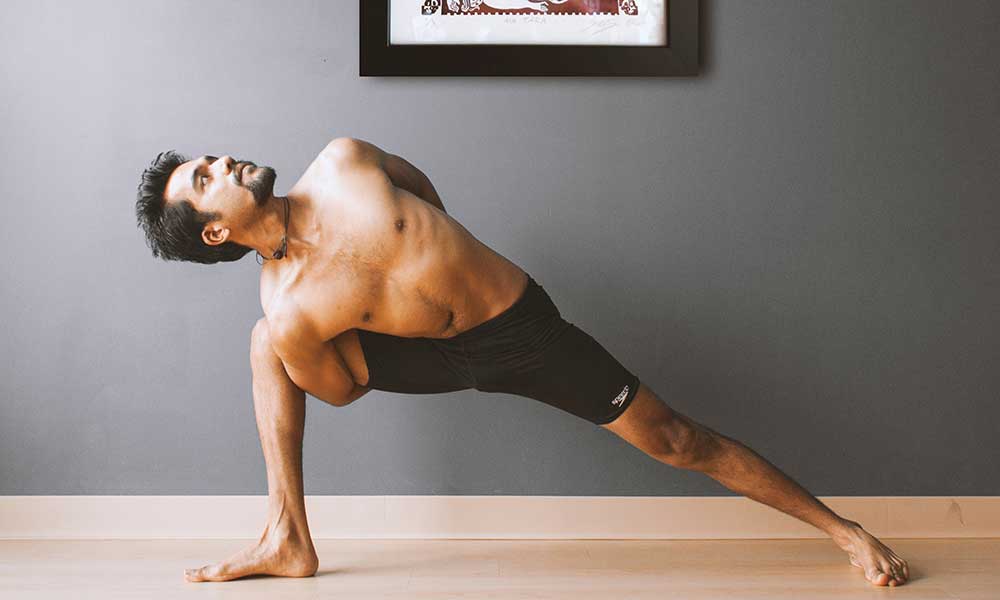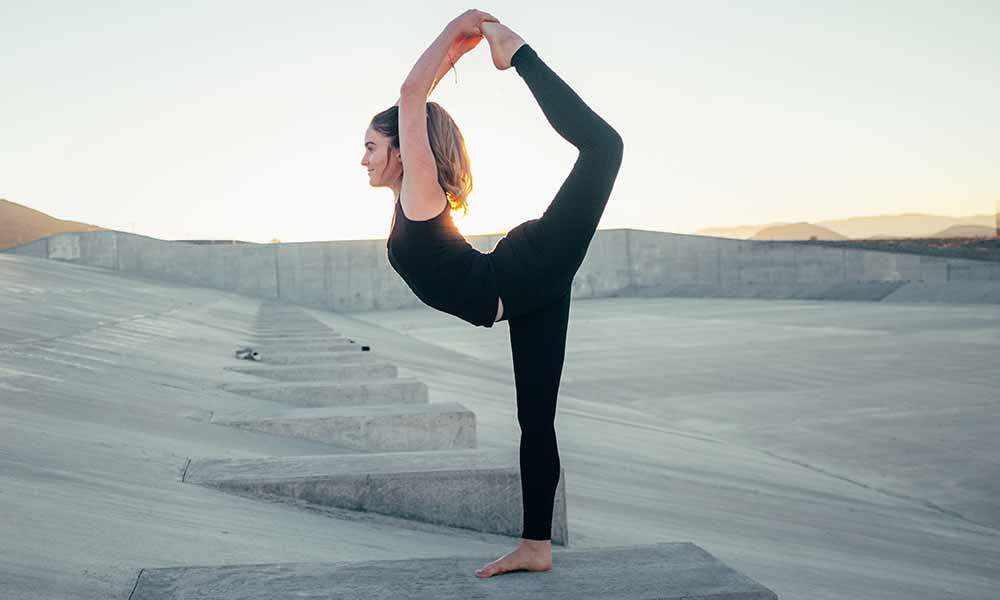Over the past few decades, the Western world has embraced the practice of yoga in several different forms. One of the most popular forms of yoga, particularly a hit among celebrities, is Kundalini Yoga. This ancient yoga practice consists of chanting, meditation, and even singing. If you’ve never practiced Kundalini yoga and might want to give it a try, keep reading for the scoop on this dynamic practice.
The History of Kundalini Yoga
Legend has it that Kundalini Yoga was originally born in India by the warrior class in the Sikh religion. However, a deep dive into mystical literature and traditions showed that Kundalini, called by several different names, appears to have been a universal phenomenon in esoteric teachings for around three thousand years.
Kundalini-type experiences can be dated back to esoteric teachings of the Egyptians, Tibetans, Chinese, some Native Americans, and Africa. Kundalini has been interpreted from the Bible as “the solar principle in man”, and is also referenced in the Koran, the writings of Plato and other Greek philosophers, alchemical tracts, and in Hermetic, Kabbalistic, Rosicrucian, and Masonic writings.
Prior to the 1970s, Kundalini was pretty much unheard of to Western society. It slowly gained traction once Westerners became intrigued by the notion of consciousness. In fact, Kundalini Yoga wasn’t even taught publicly in the United States until Yogi Bhajan, transcending the ancient tradition of secrecy, brought Kundalini Yoga to Los Angeles.
When he arrived to Los Angeles, Bhajan met several young hippies, whom he referred to as the “spiritual seekers” of society. He appealed to them by informing them that the experience of higher consciousness that those seekers were attempting to find through drugs could be achieved by practicing Kundalini Yoga, which he also believed could rebuild their nervous systems.
Interestingly, Yogi Bhajan foresaw the current information overload we experience in today’s world and the effects it would have on our mental and emotional well-being. In the early 2000s, well before Facebook emerged in popularity and took up residence on our mobile devices, Bhajan predicted that information overload would create “conditions of unimaginable disorientation.”
The first ever Kundalini Yoga session happened in Phoenix in the early 70s, where practitioners continued to practice under Bhajan until he passed away in 2004.
Since then, Kundalini Yoga classes have spread throughout the United States and has become especially popular among Hollywood stars like Gwyneth Paltrow, Russell Brand, and many others.
What is Kundalini Yoga?
Kundalini Yoga is an ancient spiritual practice that was previously reserved for yogi mystics in India and only taught in secret. It is believed that those who practice Kundalini Yoga can be cleansed and detoxified, stripped of stress, and rewired to reduce the effects of past traumas.
Kundalini practice has the power to heal an overworked nervous system and raise complete body awareness. Kundalini is derived from the Sanskrit word kundal, which means “coiled energy.” The main idea of Kundalini yoga is that we all have energy gathered at the base of our spine, like that of a coiled serpent. When we practice Kundalini yoga, we perform a natural unfolding that brings spiritual energy up and out of our spine through the seven chakras, and out of the crown of our head.
Chakras are energy centers, thought to be spinning disks of energy that correspond to certain nerve bundles and major organs. In order for them to function at their best, the seven chakras need to remain open and balanced. If one, or more, of our seven chakras become blocked, we could experience physical or emotional symptoms in relation to a particular chakra.
The seven chakras are:
- Root chakra: Located at the base of the spine. This chakra is responsible for your sense of security and stability. The corresponding color is red.
- Sacral chakra: Located below the belly button, it is the chakra of creative energy and sexuality. The corresponding color is orange.
- Solar Plexus chakra: Located in the abdominal area. It is responsible for confidence and self-esteem. The corresponding color is yellow.
- Heart chakra: Located in the chest, near the heart. This chakra is all about our ability to love and show empathy and compassion. The corresponding color is green.
- Throat chakra: Located in the throat. This chakra has to do with our ability to communicate verbally. The corresponding color is blue.
- Third eye chakra: Located between the eyes. This chakra is responsible for a strong gut instinct, wisdom, and intuition. The corresponding color is indigo.
- Crown chakra: Located at the top of the head, it represents your spiritual connection to yourself, others, and the universe. The corresponding color is violet.
With regular Kundalini practice, it is believed to lead to spiritual enlightenment, otherwise known as a “Kundalini awakening.” Kundalini yoga consists of meditation, challenging breathing techniques, and physical movements that are designed to balance and heal your chakras.
Breathing techniques in Kundalini Yoga
As Kundalini energy rises, it is believed to help balance these chakras and increase spiritual wellness. Two of the breathing techniques that are used in the Kundalini yogic practice are:
- Long Deep Breathing: A breathing exercise that is great for relaxation and lung-related ailments. To do this exercise, sit upright or lie down in corpse pose. Begin by filling up your stomach with air, and then consciously pressing the air into the lower areas. Arch forward slightly as you inhale. Once the lungs are completely filled with air, hold the breath lightly for a moment and then press the shoulders back and expand the chest out so that the full length and pressure on the diaphragm can be felt.
- Breath of Fire: A cleansing and energizing breathing exercise, powered by abdominal contractions. To begin this breathing exercise, you will first need to breathe deeply. Then, as soon as the lungs are fully expanded, immediately force all of the air out. Continue this pattern for multiple cycles of breath, getting faster as you go.
Alternate nostril breathing is another one of the deep breathing techniques that is sometimes used in Kundalini Yoga. It is a simple breathing technique that requires you to breathe in through one nostril and out the other by using a finger to close one nostril at a time.
Whether performed alone or coupled with meditation, deep breathing techniques have been scientifically proven to relieve stress, improve cognitive function and promote an overall healthy mind.
Kundalini Yoga Poses
Kundalini Yoga is comprised of physical postures, pranayama (breath), drishti (eye gaze), mantras, asanas (yoga poses), and mudras that lead us to a connection with higher consciousness.
When all of these elements are combined together, they are called Kundalini kriyas. A kriya is a set of physical postures, breathwork, and movements that are performed as a sequence, leading the mind and body to a specific desired outcome.
Kundalini Yoga is a yoga practice that has the ability to strengthen and improve our nervous system. The movements done in Kundalini practice will help you cleanse and focus your mind, bringing a sense of balance to your body.
Here are some of the techniques you might practice through your physical body while doing Kundalini Yoga:
Ego Eradicator
This is a simple yet effective exercise that is performed in Kundalini yoga to strengthen and cleanse the lungs, open the heart, and can literally plug us into the higher realms by balancing the two hemispheres of the brain and welcoming a feeling of mental clarity to turn off the chatter of the negative mind.
To do this pose:
- Sit down in an easy pose (Sukasana).
- Bend your fingers at the middle knuckle so that the pads of your fingertips sit on your palms near the base of your fingers.
- Point your thumbs up toward the sky.
- Raise your arms 160 degrees above your head.
- Focus your eyes up to the Third Eye Chakra, and then start doing the Breath of Fire breathing technique.
Spinal Flexes (Seated Cat-Cow Poses)
Yogi Bhajan believed that we are only as old as our spine is flexible. When your spine is stiff, it can disrupt the flow of spinal fluid, which could stimulate the aging process and restrict the efficiency of your digestive system. Spinal flexes help to relieve tension in the spine and allow space for a healthy flow of energy.
Here’s how to do it:
- Sit in an easy seated pose, gently holding your knees or ankles with both of your hands.
- Bring your attention to your heart’s center.
- Close your eyes and inhale deeply as you lift your gaze and pull your heart forward for cow pose.
- As you exhale, round your spine for cat pose.
Sufi Grind Pose
The spinal movements we do during seated cat-cow pinpoint the lower spine predominantly, while Sufi Grind pose primarily targets your thoracic or (mid) spine.
To practice this pose:
- Begin in an easy pose with your hands resting softly on your knees.
- Move your spine in a circular motion counterclockwise, churning and grinding your thoracic spine and abdomen.
- Take a deep breath in as you circle forwards and breathe out as you circle back around.
- Halfway through this rhythm, switch directions.
Shoulder Twist
This is a great mobility movement for the cervical spine as it eases tension and stiffness around your upper back, shoulders, and neck. Your breath can open and recharge the lungs, creating immense energy that strengthens and expands your aura, as you churn up energy around the body.
To do this pose:
- Place your fingertips on your left shoulder and your right fingertips on your right shoulder.
- Keeping your elbows in a straight line with your shoulders and parallel to the ground, start to twist left and right.
- When you twist to the left, breathe in. When you twist to the right, breathe out.
- Say the mantra Sat Nam in your head as you twist (Sat left, Nam right).
- Let your head naturally fall into the rhythm of movement with your spine.
Frogs
This cool little physical exercise is a great way to tone, shape, and strengthen the lower body while providing a cardiovascular workout. The energy that gets sparked in the lower chakras is then pushed up your spine to connect with the higher chakras.
To do this:
- Stand on your toes with your feet pointing out 45 degrees. Let your heels touch and keep your knees bent deeply out on either side with your hands resting on the floor.
- When you breathe in, straighten your knees, position your hips up to the sky, and keep your head low. Hands should stay on the floor resting.
- When you breathe out, bend back into the position you started in, lifting up your head and dropping your hips down.
- Continue rapidly with deep breathing.
- To finish this practice, come up to stand with your feet flat on the floor and take five deep breaths through your nose.
Health benefits of Kundalini Yoga
There are so many amazing reasons why yoga is good for our body, mind, and soul. Kundalini yoga specifically has various science-backed benefits:
- Relief from stress and anxiety: Kundalini Yoga has both short-term and long-term positive effects on mental health disorders such as generalized anxiety and depression.
- Improves cognitive function: Kundalini practice can help to improve memory, executive functioning, reasoning, problem-solving, and cognitive flexibility.
- Boosts self-perception: Kundalini Yoga may also lead to body positivity and self-acceptance. Some have even found that it can help in the recovery from certain eating disorders like bulimia nervosa and anorexia nervosa.
- Spiritual enlightenment: As Kundalini energy awakens, we become more spiritually connected with ourselves and others.
Additionally, people who practice Kundalini yoga regularly tend to have more empathy, an increased sense of creativity, improved charisma, increased energy, and internal peace.







